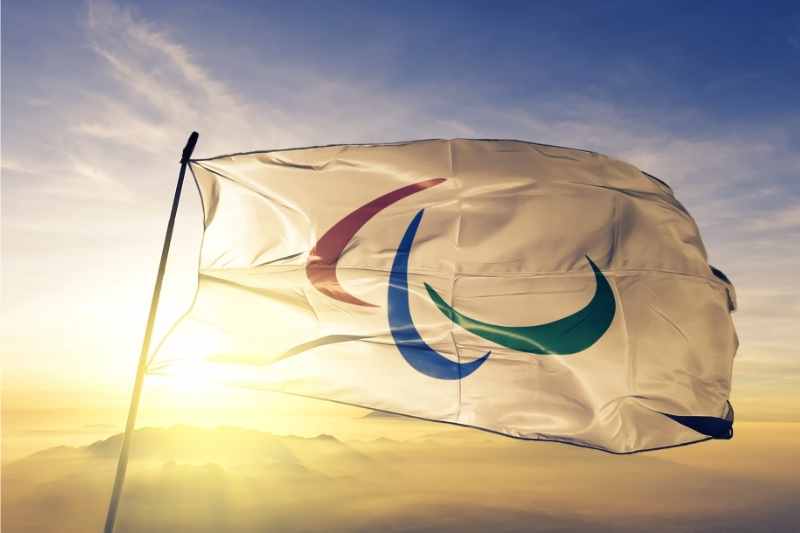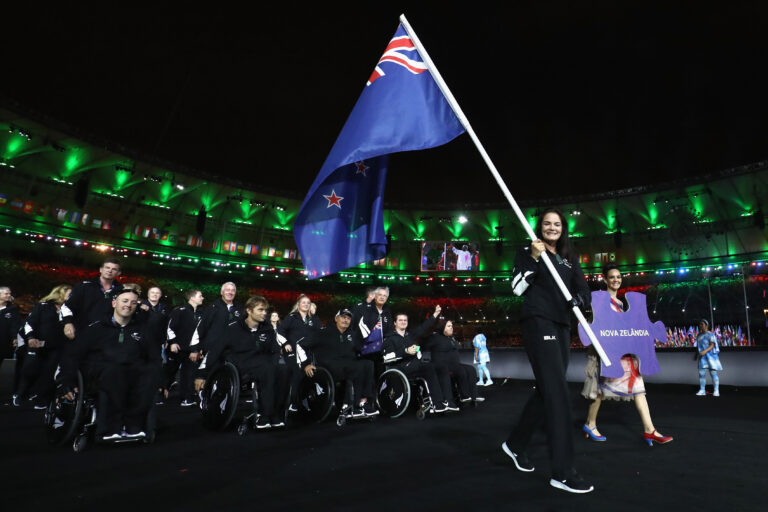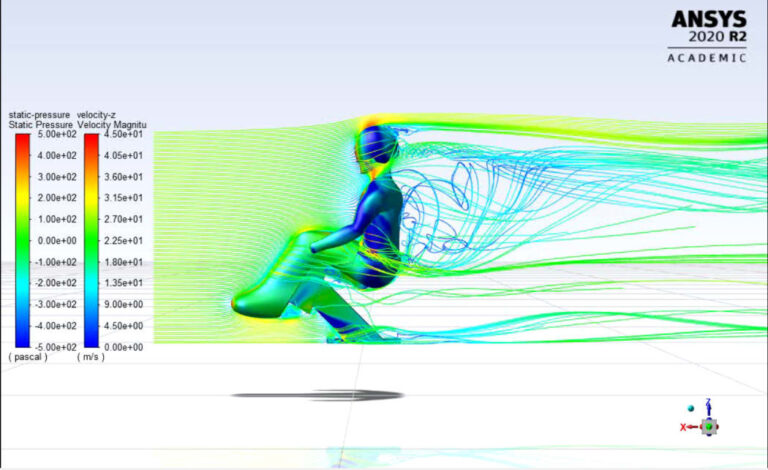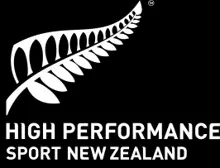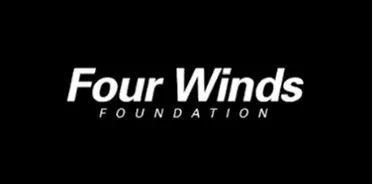If like us, you are starting to get excited about the upcoming Paris 2024 Paralympic Games, there are a few things that might help you to understand a little bit more about the different Paralympic sports and the sport classes their Para athletes can compete in
Para sport is sport within the Paralympic Movement for people with a disability. Athletes competing in Para sport have a health condition that presents as an impairment and leads to a competitive disadvantage in sport.
Classification is integral to Para sport as it provides a structure for fair and equitable competition within the Paralympic Movement.
All Para athletes wishing to compete in Para sport must have a sports specific class which is allocated through the evaluation process of Classification.
The purpose of Classification is to define who is eligible to compete in a Para sport and to group Para athletes into ‘sports classes’, according to how much their impairment affects their ability to carry out the fundamental activities in a specific sport.
Classification is sport-specific because an impairment affects the ability to perform in different sports to a different extent. As a consequence, a Para athlete may meet the criteria in one sport but may not meet the criteria in another sport.
Classification ensures that the impact of impairment in each event is minimised and that the success of an athlete is determined by skill, fitness, power, endurance, tactical ability, and mental focus.
Who is eligible for Para sport?
The Paralympic Movement offers sports opportunities for athletes with physical, vision and/or intellectual impairments that have at least one of the following 10 eligible impairments: Impaired muscle power, Impaired passive range of movement, Limb deficiency, Leg length difference, Short stature, Muscle tension, Uncoordinated movement, Involuntary movements, Vision impairment, Intellectual Impairment.
When you tune in to watch the Paralympic Games that kick off on Tuesday 24 August, you will notice that all of the sports have a specific code associated with them. This refers to the different sports classes in each Paralympic sport
Find out more about Classification on the PNZ website here: Para athlete Classification.
Click on the LEXI Classification Explained article on this page and then the Classification tab on the top of the page for an explanation of all the sports classes for the different Paralympic Sports.
Archery
Archery is open to athletes with an eligible physical impairment.
Athletes at Tokyo 2020 will compete in two events: W1 and Open. W1 is for athletes with an impairment in all four limbs that use a wheelchair, and Open combines W2 and ST classes, including athletes who have an impairment in the legs and use a wheelchair or have a balance impairment and shoot standing or resting on a stool.
*The use of assistive equipment or an assistant is allowed depending on the impairment, while a variety of techniques may be employed, including pulling the bowstring with the mouth.
Athletics
Athletics is open to athletes with an eligible physical, intellectual or vision impairment.
In athletics, the sport class consists of a prefix “T“ or “F“ and a number. The prefix T stands for “track“, marathon and jumping events, and F stands for “field.“ It indicates for which events the sport class applies, either for track/jump/marathon or for field events. Classes are divided in terms of type (indicated by the first digit) and level of impairment. In general, the lower the second digit, the higher the level of impairment.
- T/F11, T/F12 and T/F13 are for vision impaired athletes.
- T/F20 is for athletes with an intellectual impairment.
- T/F30 classes are for athletes with coordination impairment (involuntary movements, uncoordinated movements and/or muscle tension) often due to cerebral palsy or brain injury. Classes T/F31, T/F32, T/F33 and T/F34 are for athletes competing in a wheelchair. Classes T/F35, T/F36, T/F37 and T/F38 are for athletes competing in standing position.
- T/F40 and T/F41 are for athletes of short stature.
- T/F42, T/F43 and T/F44 are for athletes with a leg deficiency, leg length difference, impaired muscle power or impaired passive range of movement in the legs, with athletes competing in a standing position.
- T/F45, T/F46 and T/F47 are for athletes with arm deficiency, impaired muscle power or impaired passive range of movement in arms, with athletes competing in a standing position.
- T/F51, T/F52, T/F53, T/F54, T/F55, T/F56 and T/F57 are for athletes with impaired muscle power, restricted range of movement, limb deficiency or leg length difference, with athletes competing in seated position e.g. with cervical cord injury, spinal cord injury, amputation, functional disorder.
- T/F61, T/F62, T/F63 and T/F64 are for athletes with a leg amputation, who compete with prosthetics in a standing position.
Badminton
The current classification for Badminton is organised as follows:
- WH1 is for players who require a wheelchair to play badminton and usually have an impairment in both their legs and trunk. Players are required to play in a wheelchair in this class
- WH2 is for players who could have an impairment in one or both legs and minimal or no impairment of the trunk.
- SL3 players must play standing. The player could have impairment in one or both legs and poor walking/running balance.
- SL4 is a second standing class where the player has a lesser impairment compared to Sport Class SL3. The player could have an impairment in one or both legs and a minimal impairment in walking/running balance.
- SU5 is for players with an impairment of the upper limb. The impairment could be on the playing or non-playing hand.
- SH6 is for players who have a short stature.
Basketball
The current classification for Basketball is organised as follows:
Athletes with different eligible physical impairments compete together in wheelchair basketball. All athletes compete in a wheelchair and have an impairment affecting their legs and arms. Players, for example, have amputations or paraplegia. Not all the players are wheelchair users in daily life.
Every player is assigned a point value based on their functional ability, from 1.0 for a player with the least physical function (‘low-pointer’) through to 4.5 for the most physical function (‘high-pointer’). While most athletes have normal arm and hand function, the main differences between athletes of different sport classes are trunk control and sitting balance, which allows them to lean forward and sideways to catch and pass the ball.
There are 12 players in each team, with no more than five on court. The five players on court are only allowed to have a maximum of 14 points.
Boccia
Boccia is open to athletes with an eligible physical impairment.
Men and women compete together and there are four classes (BC1-4) based on the type or degree of impairment. The rules are adjusted depending on the class, such as allowing the ball to be kicked by athletes who are unable to throw it with their hands, providing support from an event assistant, or using an inclined ramp to roll the ball.
- BC1: Athletes in sport class BC1 have severe activity limitations affecting their legs, arms and trunk due to co-ordination impairments, and are typically dependent on a powered wheelchair. They can grasp and throw the ball and do not use assistive devices. Athletes with some leg control are allowed to propel the ball with their foot.
- BC2: Boccia players in sport class BC2 have better trunk control and arm function than the players in BC1. The abilities of their arms and hands often allow them to throw the ball overhand and underhand and with a variety of grasps. They are not eligible for assistance.
- BC3: Athletes competing in sport class BC3 have significantly limited function in their arms and legs, and poor or no trunk control due to cerebral or non-cerebral origins. Besides, they are unable to consistently grasp or release the ball and to help them propel the ball onto the court, they use a ramp and other assistive devices to roll the ball with the help of a Sport Assistant.
- BC4: While the sport classes BC1-2 include athletes with muscle tension, involuntary movements or uncoordinated movements, sport class BC4 comprises athletes with impairments that have no cerebral origin. Among possible health conditions are progressive weakness and loss of muscle mass (muscular dystrophy), spinal cord Injuries or amputations affecting all four limbs. Players throw the ball usually with a pendulum swing, sometimes using both hands or arms. They may use a glove to sustain their grip of the ball.
Canoe
Canoe is open to athletes with an eligible physical impairment.
Athletes are divided into three groups according to the degree of impairment and activity limitation. The classes are KL1 (athletes who have very limited trunk and no leg function and paddle with shoulders and arms only); KL2 (athletes who are partially able to use their legs and trunk); and KL3 (athletes have trunk and partial leg function. They are able to sit with their trunk bent forward in the kayak and are able to paddle by bracing their legs and using their hips).
Cycling
The current classification for Cycling is organised as follows:
Athletes compete in C (cycling), H (handcycling), T (tricycle) and B (tandem) classes, depending on their impairment. C class is for athletes with a limb deficiency, impaired muscle power or range of motion and impairments affecting coordination, such as uncoordinated movements and involuntary movements and is subdivided into classes C1, C2, C3, C4 and C5 according to the severity of impairment. H class is for athletes competing with a handcycle with impairments such as amputation or paralysis of the legs or motor function impairments and is subdivided into classes H1, H2, H3, H4 and H5. T class is for athletes competing on a tricycle with a lack of balance and/or restriction in pedalling due to muscle tension, uncoordinated movements or involuntary movement. It is subdivided into classes T1 and T2. B class is for athletes with vision impairments competing on a tandem with a sighted pilot. B1, B2 and B3 athletes compete in one event.
Equestrian
Equestrian is open to athletes with an eligible physical or vision impairment.
In Para equestrian dressage riding there are five grades for athletes with different physical and vision impairments which are grouped on the basis of different medical profiles. Lower grades indicate more severe activity limitations and higher grades include athletes with less severe activity limitations.
Athletes in Grade I have severe impairments affecting all limbs and the trunk. Athletes in Grade II have either a severe impairment of the trunk and minimal impairment of the arms or moderate impairment of the trunk, arms and legs. Athletes in Grade III have severe impairments in both legs with minimal or no impairment of the trunk or moderate impairment of the arms and legs and trunk. Athletes in Grade IV have a severe impairment or deficiency of both arms or a moderate impairment of all four limbs or short stature. Grade IV also includes athletes with a severe vision impairment or blindness (B1 sport class). Athletes in Grade V have a mildly impaired range of movement or muscle strength or a deficiency of one limb or mild deficiency of two limbs. Grade V also includes athletes with vision impairment (B2 sport class).
Fencing
The current classification for Fencing is organised as follows:
Wheelchair fencing is for athletes with an eligible physical impairment. At the Paralympic Games, wheelchair fencers compete in one of the following three classes, which are in turn grouped into two event categories:
- Class 2: Athletes with fair sitting balance and a normal fencing arm, e.g. paraplegic athletes or incomplete tetraplegics with a minimally affected fencing arm and good sitting balance.
- Class 3: Athletes with good sitting balance, without support of legs and normal fencing arm.
- Class 4: Athletes with good sitting balance with the support of legs and normal fencing arm.
In Paralympic Wheelchair Fencing competitions, the sport classes are combined into the following two categories for each event:
- Category A: sport classes 3 and 4.
- Category B: sport class 2
Football 5-a-side
The current classification for Football 5-a-side is organised as follows:
Football 5-a-side is a sport for blind athletes in the B1 class. All the outfield players are totally blind ?although some may have minimal light perception, and all four must wear blackout masks to ensure fairness.
Goalball
The current classification for Goalball is organised as follows:
Goalball is a sport for vision-impaired athletes. Players are partially sighted or totally blind (B1-B3 classes), but all wear eyeshades so those with varying degrees of vision impairment can compete together and to ensure fair play.
Judo
The current classification for judo is organised as follows:
Judo is a sport for vision-impaired athletes. Competitors are given classifications based on the severity of their vision impairment ranging from B1 (total blindness) to B3 (low vision). B1, B2 and B3 athletes compete together in one event.
Powerlifting
The current classification for Powerlifting is organised as follows:
Powerlifting is open to athletes with an eligible physical impairment in their legs or hips, which would prohibit them from competing in non-disabled (standing) weightlifting. There is only one sport class in Powerlifting, but the athletes compete in different weight categories.
Rowing
Rowing is open to athletes with an eligible physical or vision impairment.
The current classification for Rowing is organised as follows:
- PR1 is for athletes who have to apply force predominantly using their arms and/or shoulders but with minimal or no trunk function. These athletes will likely also have poor sitting balance and so require strapping around their mid-section to provide support. PR1 athletes compete in singles sculls (men/women) events.
- PR2 is for rowers who have functional use of their trunk, arms and shoulders but are not able to use the sliding seat to propel the boat because of significantly weakened function or mobility of the legs. PR2 athletes compete in double sculls (mixed).
- PR3 is for rowers who have residual function in their legs, trunk, arms and shoulders and can utilise the sliding seat. These sports classes include athletes with vision impairment, and there may be up to two rowers with a vision impairment in the boat). PR3 athletes compete in coxed four (mixed).
Shooting
The current classification for Shooting is organised as follows:
In shooting, there are three different sport classes for Paralympic disciplines (pistol and rifle) for athletes with an eligible physical impairment. These sport classes are specific to the event the athlete competes in – either pistol or rifle events.
Classes are based on the degree of impairment and whether the athlete is able to hold the gun with their arms (hands or arms). The sport’s three classes are SH1 Pistol, SH1 Rifle (able to hold a gun with arms) and SH2 Rifle (unable to hold a gun with arms, so a stand is used).
As the pistol is held with one hand only, athletes in SH1 Pistol have an impairment affecting one arm and/or the legs, for example resulting from amputations or spinal cord injuries. Some shooters compete in a seated position, while others will compete in a standing position as defined in the sport rules.
As the rifle is held with both hands, athletes in SH1 Rifle have an impairment in their legs, for example, amputations or paraplegia. Some athletes will compete in a seated position, while others will compete in a standing position.
SH2 Rifle athletes have an impairment that affects their arms, meaning they are not able to support the full weight of the rifles themselves. Athletes, therefore, compete using a shooting stand to support the weight of the rifle. Athletes competing in this sport class have impairments such as arm amputations or congenital impairments affecting the muscle power/movement in their arms. Some SH2 shooters have impairments in both the arms and legs, such as tetraplegia. The majority of athletes in this sport class compete in a seated position.
Sitting Volleyball
The current classification for Sitting Volleyball is organised as follows:
There are two sport classes in sitting volleyball, called VS1 and VS2 for athletes with an eligible physical impairment. The impairment of athletes in sport class VS2 is generally less severe than the impairment of athletes competing in sport class VS1.
Athletes in VS1 have impairments that significantly affect the core functions in sitting volleyball. For example, through-ankle or higher amputation, severe cases of missing or shortened limbs from birth, stiff knee due to abnormal adhesion and rigidity of the bones of the joint, muscle tension, uncoordinated movements and involuntary movements, etc.
Athletes in VS2 have impairments that affect the core functions in sitting volleyball to a lesser degree. For example, amputation through the foot/feet, stiff ankle, amputation of four digits on one hand, less severe muscle tension, uncoordinated movements and involuntary movements, etc.
Swimming
The current classification for Swimming is organised as follows:
Athletes are divided into 14 sport classes. They can have an eligible physical, vision or intellectual impairment. The sport class names in swimming consist of a prefix “S“ or “SB“ and a number. The prefixes stand for the strokes and the number indicates the sport classes. S stands for freestyle, butterfly and backstroke events. SB stands for breaststroke. SM stands for individual medley. It is not a sports class, but an entry index and calculated as (3xS + SB)/4; for classes S1-4 who have a 3-discipline medley, the formula is (2S + SB)/3).
S1/SB1 –S10/SB10 is for athletes with a physical impairment and S11/SB11–S13/SB13 is for athletes with a vision impairment. The greater the number the more functional ability the athlete has. S14/SB14 is for athletes with an intellectual impairment.
Table Tennis
The current classification for Table Tennis is organised as follows:
Table tennis is for athletes with an eligible physical or intellectual impairment.
Classes 1-5 are for wheelchair athletes. Classes 6-10 are for standing athletes. Finally, class 11 is for athletes with intellectual impairments. Within the wheelchair and standing classes, the lower the number, the greater the impact the impairment has on an athlete’s ability to compete.
Taekwondo
The current classification for Taekwondo is organised as follows:
Kyorugi is the only class which will be practiced at the Tokyo 2020 Games. It is for athletes with eligible arm impairments. Events at the Paralympic Games combine two sports classes: K44 for athletes with restrictions on one side in their arm or leg, and K43 for athletes with restrictions on both sides of their arms below the elbow joint. Both classes will compete in the K44 class.
Triathlon
Triathlon is for athletes with an eligible physical or vision impairment.
The current classification for Triathlon is organised as follows:
- PTWC1 to PTWC2 (seated) is for athletes with impairments of muscle power, range of movement, limb deficiency such as single or double leg amputation, and spinal cord injuries resulting in paraplegia or tetraplegia. (Class 1 for athletes with a more severe impairment based on hip and trunk function). In this category handcycles are used for the cycling event and wheelchairs for the running event. The two classes PTWC1 and PTWC2 compete together in the PTWC event using a start interval system
- PTS2 to PTS5 is for standing athletes with a limb impairment, for example an arm or leg amputation or functional impairment such as cerebral palsy. (Athletes are divided into Classes 2-5 based on their impairment). In this category the use of assistive devices such as prosthetic legs is permitted for cycling and running.
- PTVI1 to PTVI3 is for athletes with vision impairments (Class 1 for athletes with the most severe impairment). They compete together in a PTVI event using a start interval system. In this category athletes are assisted by a guide of the same sex; a tandem (two-person) bicycle is used for the cycling.
- For the Tokyo 2020 Games, events will be held for four of the nine classes outlined above, for both men and women. PTWC, PTS4, PTS5, PTVI for men, PTWC, PTS2, PTS5, PTVI for women.
Wheelchair Rugby
Wheelchair Rugby is for athletes with an eligible physical impairment.
The current classification for Wheelchair Rugby is organised as follows:
Every Wheelchair Rugby player is assigned a point value based on their functional ability, from 0.5 for a player with the least physical function through to 3.5 for the most physical function. A squad comprises of a maximum of 12 players and, during play, the total on-court value for each team of four cannot exceed eight points. Teams fielding female players also receive an additional 0.5 point allowance for each. This unique system means that players with minor impairments (high-pointers) can compete alongside those with more serious impairments (low-pointers).
Wheelchair Tennis
The current classification for Wheelchair Tennis is organised as follows:
There are two sport classes in wheelchair tennis and all players have in common that they have an impairment that affects at least one leg.
The first sport class is the Open Division. Players are eligible to compete in the Open division if they have a permanent physical impairment that results in substantial loss of function in one or both legs and that meets or exceeds the sport’s minimum eligibility criteria.
The second sport class is the Quad Division. Players who meet the eligibility criteria above but who also have a permanent physical impairment that results in substantial loss of function in one or both arms, and where at least three limbs are affected, are eligible to compete in the Quad division. They have limited ability to handle the racket or to move in the wheelchair so you will find that players may require racket taping and/or an assistive device in order to play.
*All information is taken from the Olympics website.
Summary
Hopefully, this helps you to understand a little bit more about the Paralympic Games and the classification of the athletes for the individual events across all sports at the Paralympic Games. Make sure you tune into TVNZ’s dedicated coverage of the 2024 Paralympic Games and bookmark this page for a quick and easy reference to the classification of your favourite New Zealand Paralympians.
First Published: 13 August 2021
Updated: 24 May 2024
